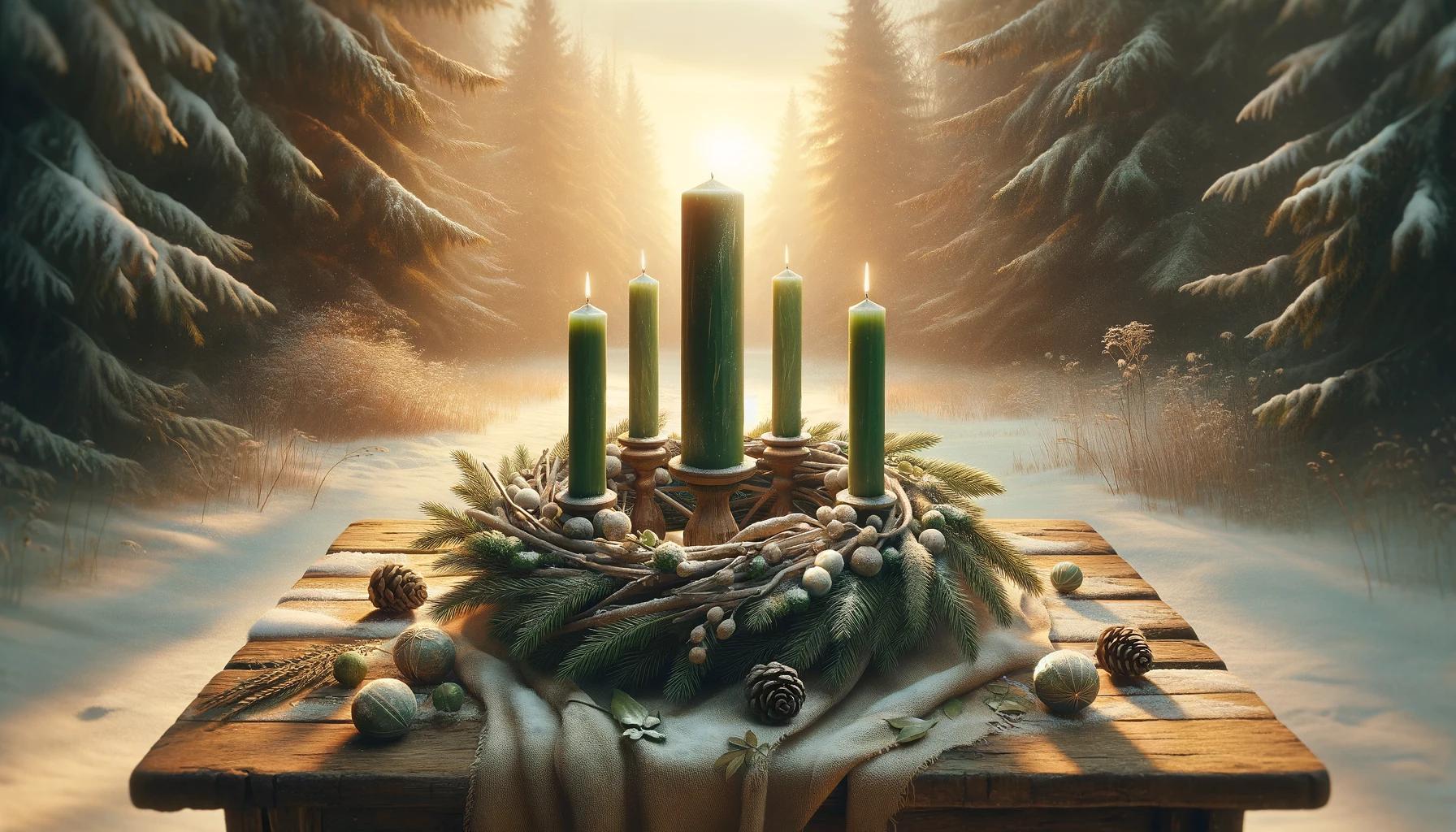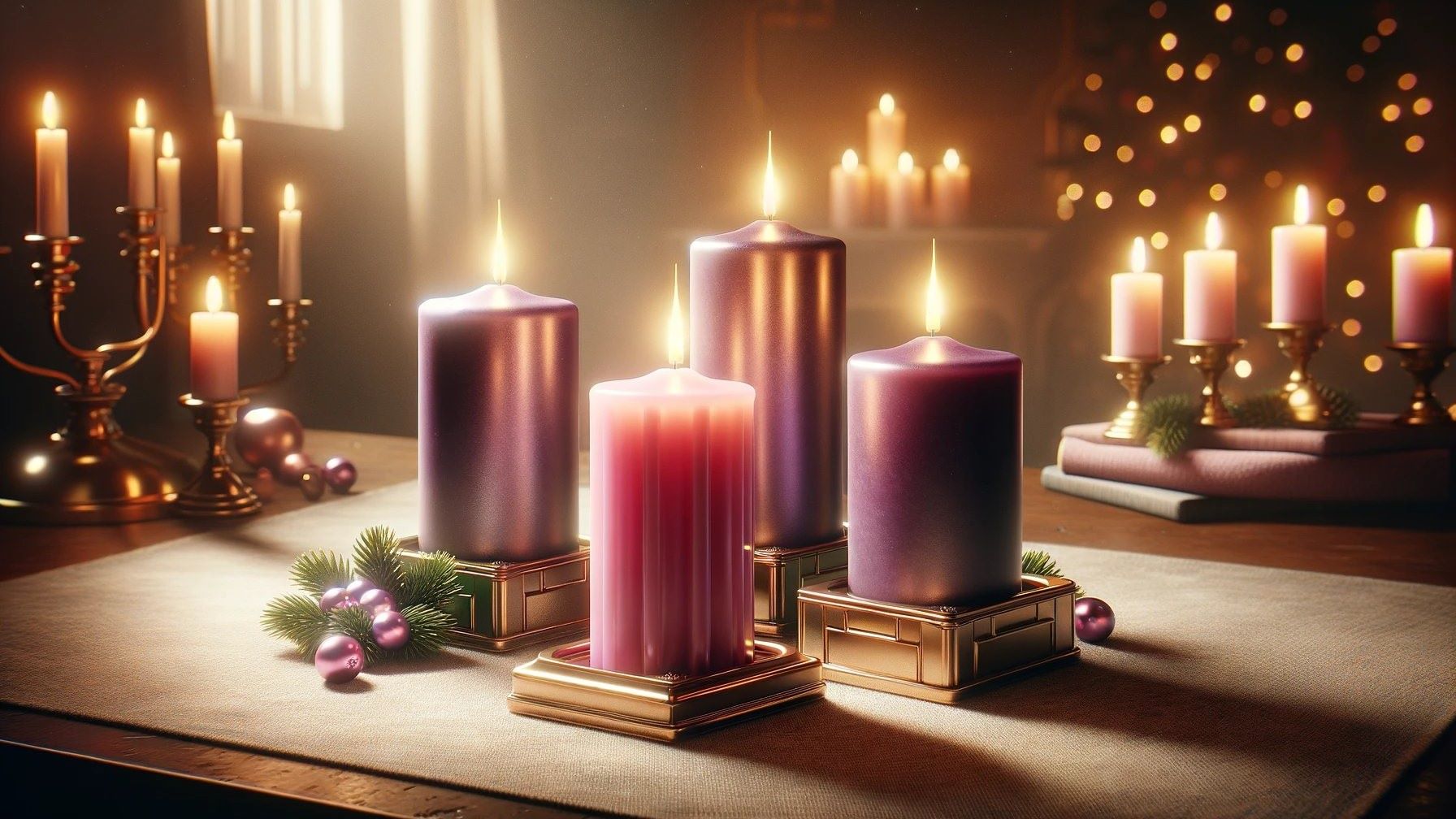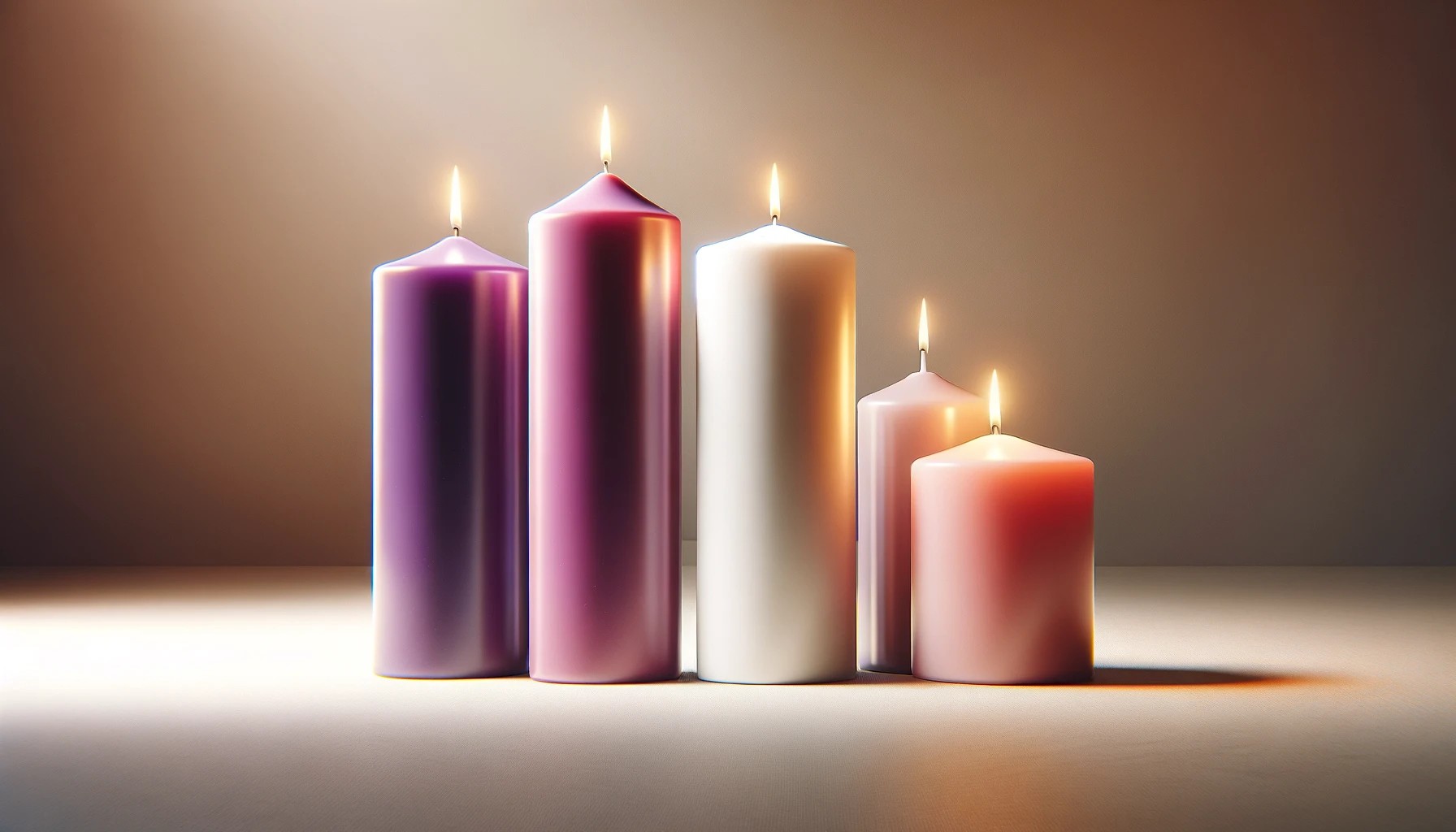Home>Special Themes>What Candle Do You Light First For Advent


Special Themes
What Candle Do You Light First For Advent
Published: February 13, 2024
Peter Smith, Editorial Director at Christian.net, combines deep insights into faith, politics, and culture to lead content creation that resonates widely. Awarded for his contributions to religious discourse, he previously headed a major organization for religious communicators, enhancing dialogue on faith's societal impacts.
Discover the significance of lighting the first candle for Advent with our special themes. Explore the traditions and meanings behind this cherished ritual.
(Many of the links in this article redirect to a specific reviewed product. Your purchase of these products through affiliate links helps to generate commission for Christian.net, at no extra cost. Learn more)
Table of Contents
Introduction
Advent, a time of anticipation and preparation, is a cherished tradition observed by many Christian denominations around the world. As the holiday season approaches, the lighting of Advent candles holds a special significance, symbolizing the spiritual journey towards the celebration of Christ's birth. Understanding the tradition of Advent candles and the meaning behind each candle can enrich our appreciation of this sacred ritual.
The lighting of Advent candles is a symbolic and spiritual practice that dates back centuries, serving as a poignant reminder of the hope, love, joy, and peace that Christ brings into the world. Each candle represents a different aspect of the journey towards the birth of Jesus, and the order in which they are lit holds deep significance. Exploring the history and symbolism of these candles can provide a profound insight into the spiritual significance of the Advent season.
In the following sections, we will delve into the rich tradition of Advent candles, uncover the profound meanings associated with each candle, and explore the question of which candle to light first. By gaining a deeper understanding of this timeless tradition, we can embrace the true essence of Advent and find meaning in the symbolic act of lighting these candles.
Read more: How To Light The Advent Candles
The Tradition of Advent Candles
The tradition of Advent candles holds a significant place in the hearts of Christians worldwide, serving as a poignant symbol of the spiritual journey towards the celebration of Christ's birth. This time-honored practice traces its roots back to the early 19th century in Germany, where the concept of Advent wreaths and candles was introduced as a way to mark the four weeks leading up to Christmas. Over time, this tradition has transcended cultural and religious boundaries, becoming a cherished custom in many Christian households and congregations.
The Advent wreath typically consists of a circular evergreen wreath adorned with four candles, often accompanied by a central, larger candle known as the Christ candle. Each candle represents a different aspect of the spiritual themes associated with the Advent season: hope, love, joy, and peace. As the weeks progress, these candles are lit in succession, with the Christ candle being kindled on Christmas Eve or Christmas Day, symbolizing the arrival of the Light of the World.
The act of lighting the Advent candles serves as a visual and symbolic reminder of the spiritual significance of the season, fostering a sense of anticipation and reflection as believers prepare their hearts for the celebration of Christ's birth. It also provides a tangible way for families and communities to come together in prayer and contemplation, fostering a sense of unity and shared faith.
In addition to its spiritual symbolism, the tradition of Advent candles also carries a practical significance, as the gradual lighting of the candles marks the passage of time and the approach of Christmas. This ritual provides a rhythmic and meditative way to mark the weeks leading up to the joyous occasion, creating a sense of continuity and anticipation as each candle is lit in succession.
Overall, the tradition of Advent candles embodies a profound blend of spiritual symbolism, communal participation, and the passage of time, making it a cherished and meaningful practice for countless individuals and congregations around the world. As we explore the deeper meanings associated with each candle and the order in which they are lit, we gain a deeper appreciation for the rich tapestry of traditions that enrich the Advent season.
The Meaning of Each Candle
The lighting of Advent candles holds profound symbolism, with each candle representing a distinct spiritual theme that aligns with the journey towards the celebration of Christ's birth. Understanding the significance of each candle enriches our appreciation of the Advent season and deepens our connection to its timeless traditions.
-
The Candle of Hope: The first candle, often lit on the first Sunday of Advent, symbolizes hope. This candle serves as a beacon of optimism, reminding believers of the anticipation and expectation surrounding the arrival of the Messiah. It represents the hope that Christ brings into the world, illuminating the path towards redemption and renewal.
-
The Candle of Love: The second candle, lit on the second Sunday of Advent, embodies the theme of love. This candle serves as a poignant reminder of the boundless love that God has bestowed upon humanity through the gift of His Son. It symbolizes the profound and unconditional love that defines the essence of the Christmas story, inspiring believers to emulate this love in their own lives.
-
The Candle of Joy: The third candle, kindled on the third Sunday of Advent, represents joy. This candle radiates with the exuberance and delight that accompany the anticipation of Christ's birth. It serves as a symbol of the profound joy that permeates the hearts of believers as they prepare to welcome the Savior into the world, infusing the season with a sense of jubilation and spiritual exultation.
-
The Candle of Peace: The fourth candle, lit on the fourth Sunday of Advent, embodies the theme of peace. This candle serves as a tranquil and reassuring symbol, reminding believers of the peace that Christ brings into their lives and the world. It represents the harmonious and transformative peace that emanates from the promise of salvation, offering solace and serenity amidst the busyness of the holiday season.
As each candle is lit in succession, the Advent wreath becomes aglow with the collective symbolism of hope, love, joy, and peace, creating a visual tableau that encapsulates the spiritual essence of the season. Together, these candles form a powerful narrative that guides believers through a contemplative and transformative journey, culminating in the illumination of the Christ candle on Christmas Eve or Christmas Day.
By embracing the profound meanings associated with each candle, individuals and communities can embark on a spiritual odyssey that transcends time and tradition, fostering a deeper connection to the sacred narrative of Christ's birth. As we immerse ourselves in the symbolism of these candles, we are reminded of the enduring significance of the Advent season and the timeless truths it embodies.
Which Candle to Light First
The question of which candle to light first in the Advent tradition is imbued with profound significance, reflecting the deliberate and symbolic progression of the season. The initial lighting of the Advent candle holds a pivotal place in the spiritual narrative, setting the tone for the weeks of anticipation and preparation leading up to Christmas.
The first candle to be lit is the Candle of Hope. This inaugural act symbolizes the dawning of optimism and expectation, echoing the timeless longing for the arrival of the Messiah. As the flickering flame illuminates the darkness, it serves as a beacon of hope, reminding believers of the promise of redemption and renewal that Christ brings into the world. The Candle of Hope embodies the foundational theme of Advent, igniting a sense of anticipation and faith as the journey towards Christmas commences.
By kindling the Candle of Hope, individuals and congregations embark on a spiritual odyssey, embracing the timeless virtues of faith and expectation. This act of lighting the first candle serves as a poignant reminder of the enduring hope that defines the Christmas story, inspiring believers to cultivate a spirit of optimism and trust in the promise of Christ's coming. It sets the stage for the subsequent lighting of the candles of love, joy, and peace, infusing the Advent season with a sense of purpose and spiritual contemplation.
The deliberate choice to begin with the Candle of Hope underscores the foundational significance of hope in the Christian faith, emphasizing its role as the catalyst for the journey towards the celebration of Christ's birth. As the first flame is kindled, it ignites a sense of anticipation and longing, inviting believers to immerse themselves in the timeless narrative of the Christmas story. This intentional progression of lighting the candles encapsulates the essence of the Advent season, guiding individuals and communities through a transformative and contemplative journey.
In essence, the decision to light the Candle of Hope first embodies the spirit of anticipation and faith that defines the Advent season, setting the stage for a meaningful and introspective observance of the weeks leading up to Christmas. It serves as a poignant reminder of the enduring hope that Christ brings into the world, inviting believers to embark on a spiritual pilgrimage that culminates in the joyous celebration of the Savior's birth.
Conclusion
In conclusion, the tradition of Advent candles encapsulates the timeless themes of hope, love, joy, and peace, serving as a poignant and symbolic journey towards the celebration of Christ's birth. The act of lighting these candles holds profound spiritual significance, fostering a sense of anticipation, reflection, and communal unity as believers prepare their hearts for the joyous occasion of Christmas.
As we have explored the rich tradition of Advent candles and delved into the profound meanings associated with each candle, we have gained a deeper understanding of the spiritual tapestry that defines the Advent season. The Candle of Hope, representing the inaugural flame that ignites the journey, embodies the foundational theme of optimism and expectation, setting the stage for the subsequent candles of love, joy, and peace. This deliberate progression guides believers through a transformative and contemplative odyssey, culminating in the illumination of the Christ candle on Christmas Eve or Christmas Day, symbolizing the arrival of the Light of the World.
The tradition of Advent candles not only serves as a visual and symbolic reminder of the spiritual significance of the season but also fosters a sense of continuity and anticipation as each candle is lit in succession. It provides a rhythmic and meditative way to mark the weeks leading up to the joyous occasion, creating a sense of unity and shared faith within families and communities.
By embracing the profound meanings associated with each candle and understanding the deliberate choice to begin with the Candle of Hope, individuals and congregations can embark on a spiritual odyssey that transcends time and tradition, fostering a deeper connection to the sacred narrative of Christ's birth. The deliberate progression of lighting the candles encapsulates the essence of the Advent season, guiding believers through a transformative and contemplative journey that culminates in the joyous celebration of the Savior's birth.
In essence, the tradition of Advent candles invites us to embrace the timeless virtues of hope, love, joy, and peace, illuminating our hearts and minds as we prepare to welcome the Light of the World. As we kindle the flames of these candles, we are reminded of the enduring significance of the Advent season and the timeless truths it embodies, inviting us to embark on a spiritual pilgrimage that culminates in the joyous celebration of the Savior's birth.















